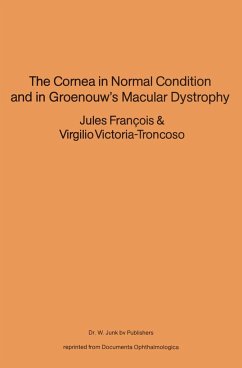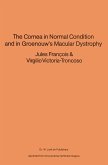The three most striking characteristics of the cornea are: a) Its structure or rather its perfectly regular architectonic, by virtue of which it is transparent. b) The absence of vessels, the cornea being nourished by the perilimbic vessels, the endothelial surface in communication with the aqueous humour and the epithelial surface in contact with the pre-corneal film. c) The very slow turnover of the cells, that is to say the keratocytes, with the result that the metabolism of the cornea is very weak. It is this third characteristic which justifies our present investigation. The keratocytes, which are apparently inactive, have in fact a latent activity. They can be activated by central corneal incisions and also by tissue cultures. Under either of those conditions, the keratocytes become very active, develop all the cytoplasmic organites and produce mucopoly saccharides as well as the precursors of the collagen (Fig. 1). In order to study the pathological keratocyte, we chose a storage disease, wherein the catabolism of the mucopolysaccharides is blocked, namely the macular dystrophy of the cornea. We undertook the same investigation both for normal and for pathologi cal corneas and studied the keratocyte 'in situ' and in tissue cultures using various microscopical and histochemical techniques. In macular dystrophy, we investigated also the deteriorations secondary to the changes in the keratocytes.








